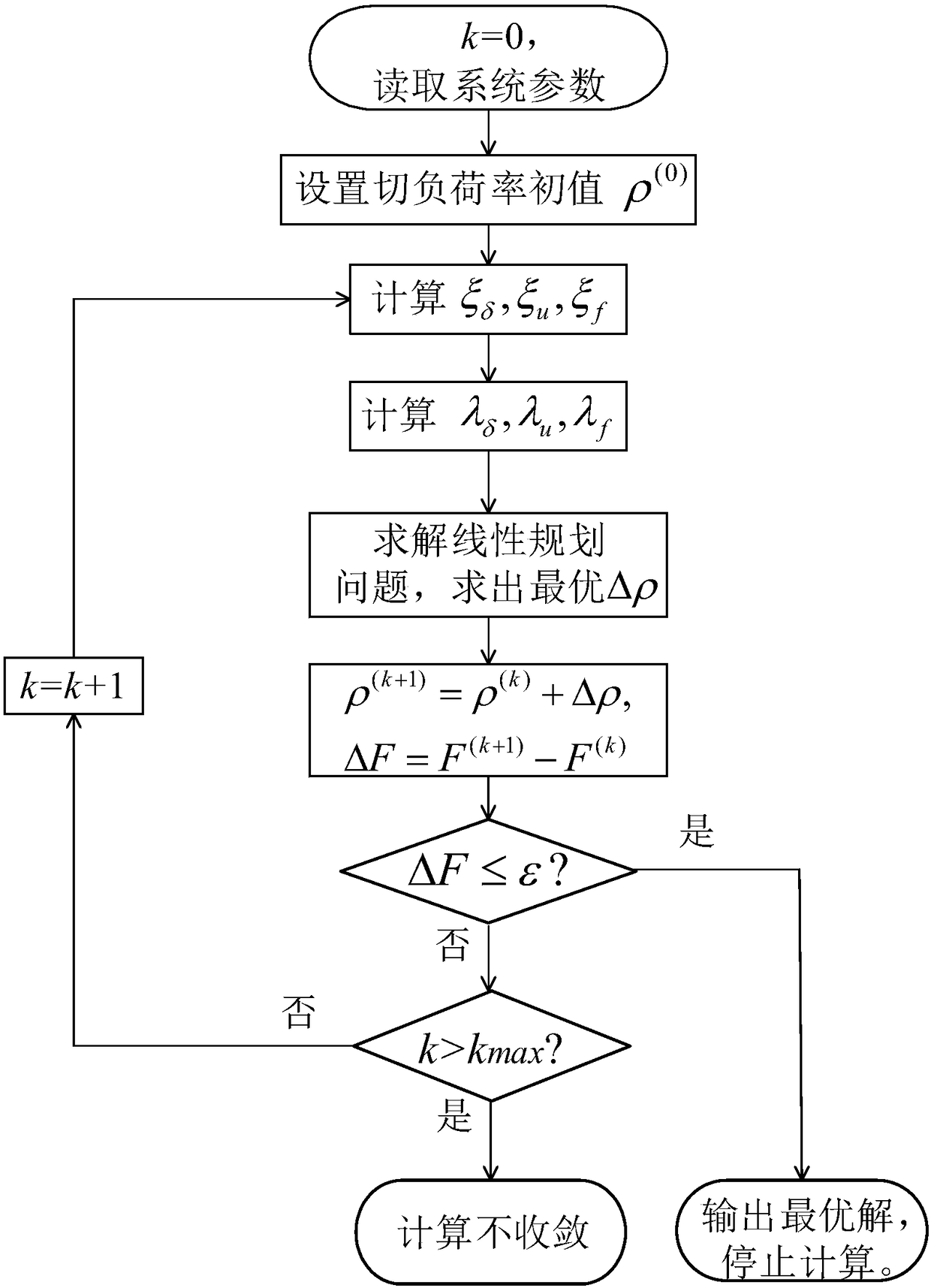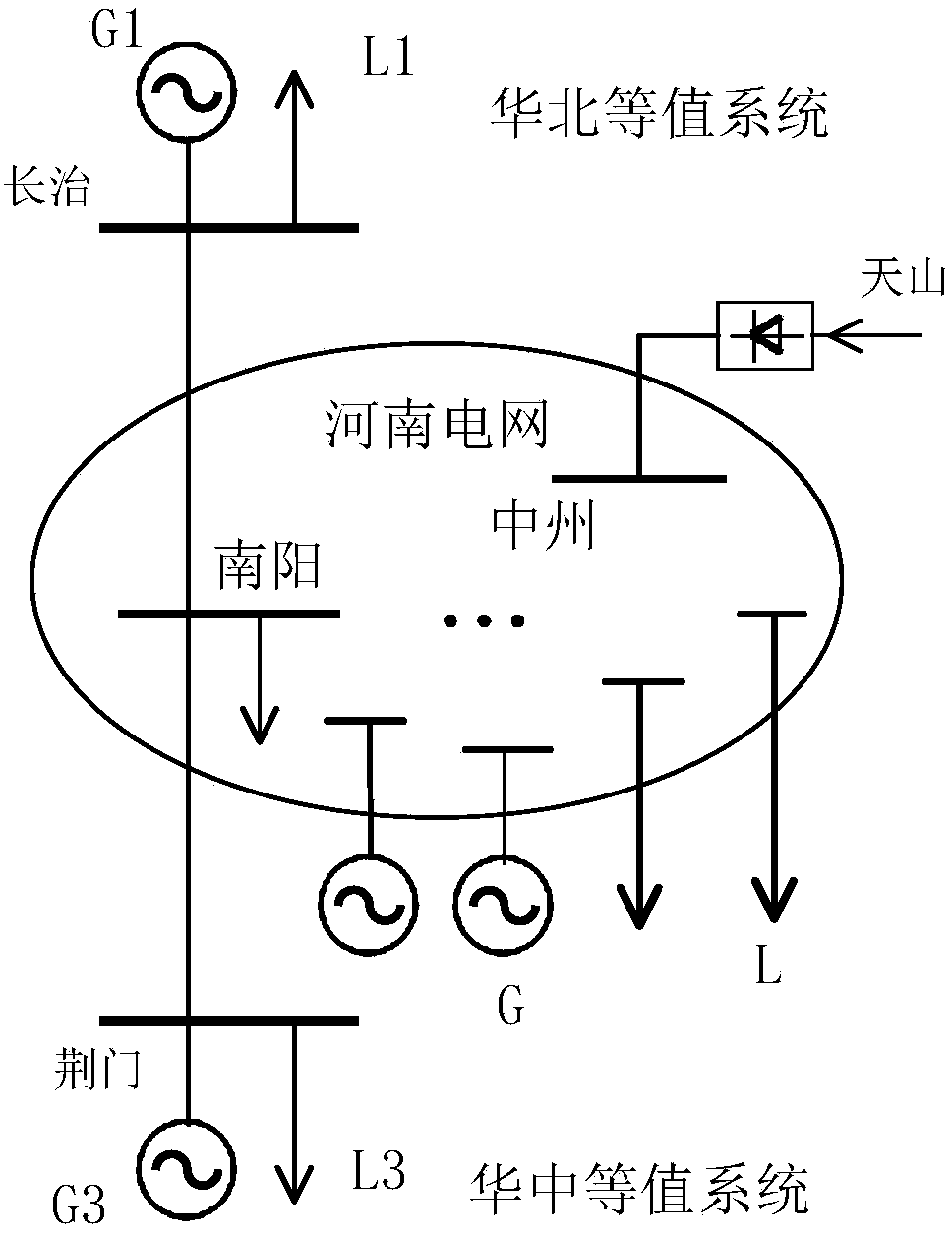DC receiving-end system transient load shedding control optimization method based on sensitivity analysis
A technology of sensitivity analysis and receiving end system, applied in the field of transient load shedding control optimization of DC receiving end system based on sensitivity analysis, which can solve the problems of large amount of calculation and insufficient consideration of complex stability problems in transient load shedding control optimization problem.
- Summary
- Abstract
- Description
- Claims
- Application Information
AI Technical Summary
Problems solved by technology
Method used
Image
Examples
Embodiment Construction
[0052] In order to make the object, technical solution and advantages of the present invention clearer, the present invention will be described in detail below with reference to the accompanying drawings and specific embodiments.
[0053] A sensitivity analysis-based transient load shedding control optimization method for a DC receiving end system described in the present invention, figure 1 Shown is the flow chart of the transient load shedding control optimization method of the DC receiving end system based on sensitivity analysis of the present invention, including the following steps, and the systems mentioned in the present invention all refer to the DC receiving end system;
[0054] Step 1. Obtain the model and parameters of the DC receiving end system. The model and parameters of the DC receiving end system include: the structure of the system, the input power of each tie line, the model and parameters of each synchronous generator and HVDC inverter station, the impedan...
PUM
 Login to View More
Login to View More Abstract
Description
Claims
Application Information
 Login to View More
Login to View More - R&D
- Intellectual Property
- Life Sciences
- Materials
- Tech Scout
- Unparalleled Data Quality
- Higher Quality Content
- 60% Fewer Hallucinations
Browse by: Latest US Patents, China's latest patents, Technical Efficacy Thesaurus, Application Domain, Technology Topic, Popular Technical Reports.
© 2025 PatSnap. All rights reserved.Legal|Privacy policy|Modern Slavery Act Transparency Statement|Sitemap|About US| Contact US: help@patsnap.com



